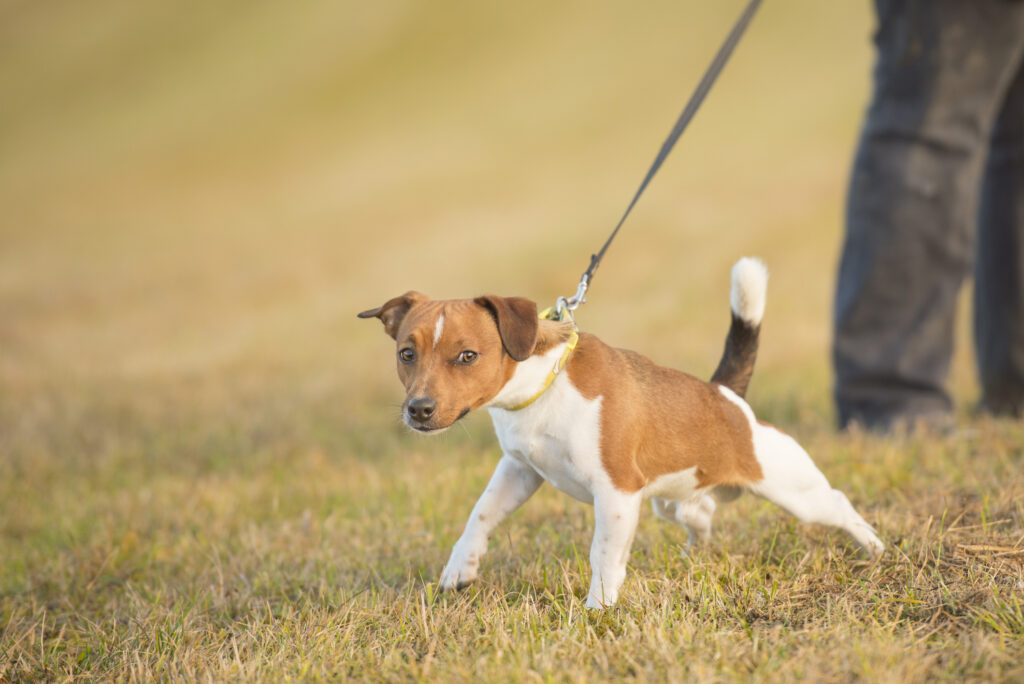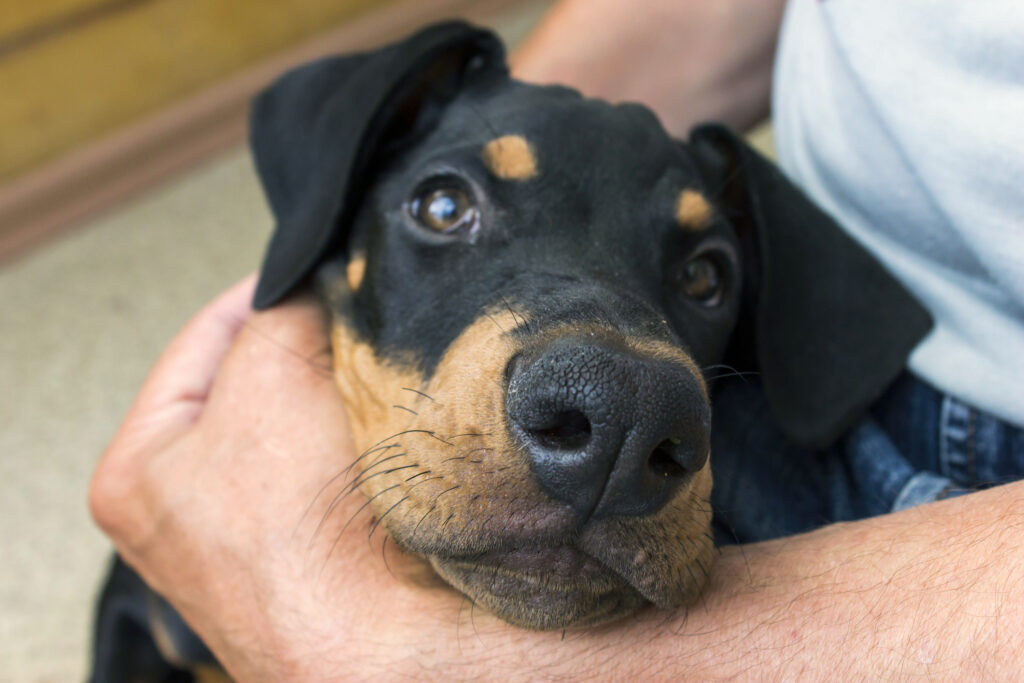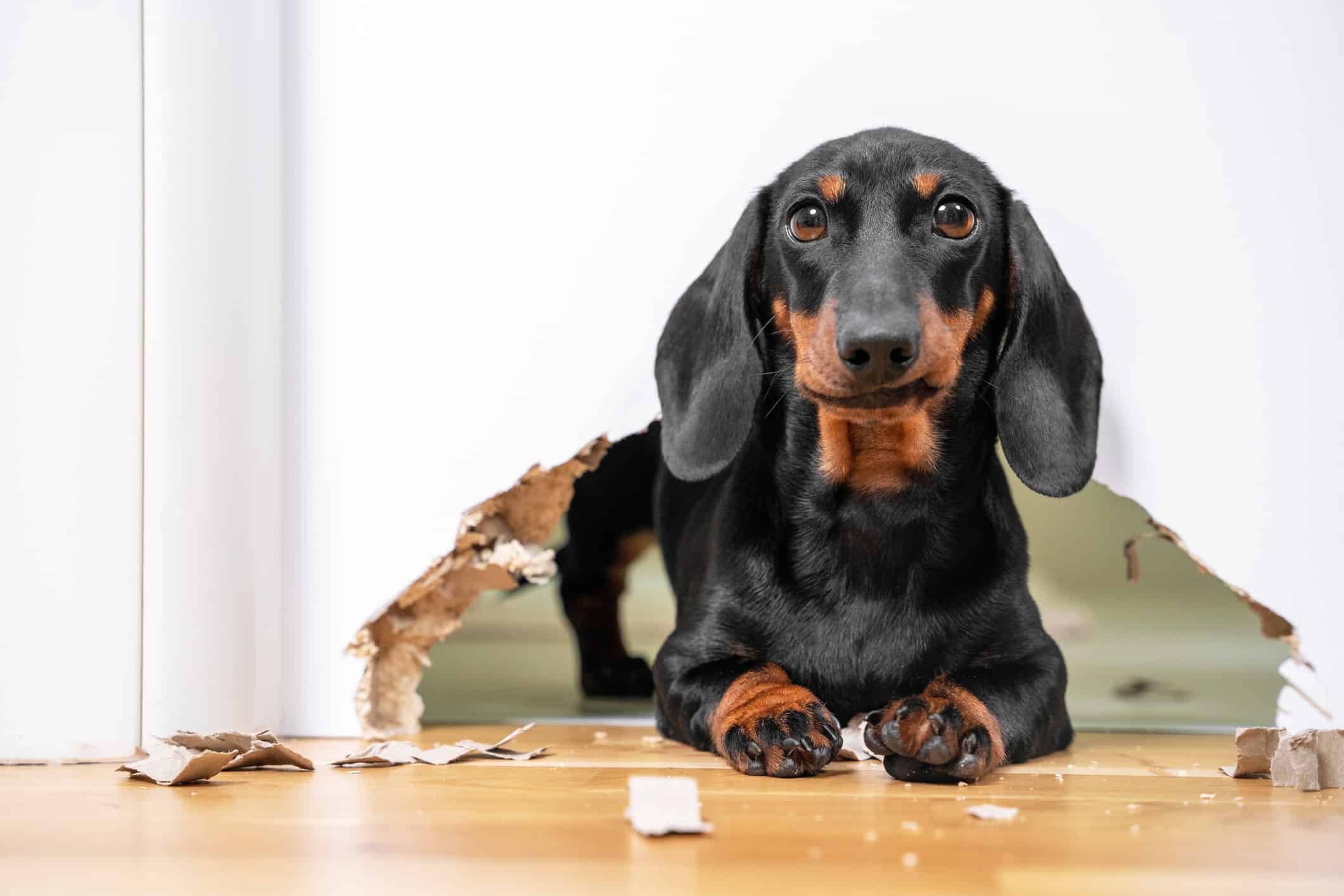“My dog is so disobedient. Their behavior is terrible – I just can’t get through to them at all!”
This quote (or variations of it) has probably been uttered by dog owners across the globe from the first moment dogs were domesticated as household pets. It conjures up visions of a disobedient dog charging through the home, barking incessantly, refusing to listen to instructions, chewing or biting on objects (or people), and generally being an uncontrollable menace.
But let’s take a step back for a moment.
Is that the reality of the situation? Are our dogs intentionally disobeying us?
What if our dogs aren’t disobedient – but instead, as humans, we are just poor communicators?
Even worse, what if their ‘bad’ behavior has been unintentionally reinforced by their owner?
In this article, we’re going to look at some of the common behaviors of the so-called disobedient dog, how humans might actually be contributing to these issues, and solutions to prevent the problems from occurring.
What does it actually mean to obey?
Before we begin, let’s review the dictionary definition of the word ‘obey’, according to Merriam-Webster:
- To follow the commands or guidance of;
- To conform to or comply with.
It follows, therefore, that not obeying (in other words, disobedience) is defined as “refusal or neglect to obey”.
Note that in the definition of the word disobedience, it is clear that this is a conscious choice not to follow commands. It isn’t ‘accidentally’ not obeying – it is a flat-out refusal. So when we hear about a disobedient dog, the implication is that the dog knows what we want them to do – they are just simply refusing to follow instructions.
In the next section of this article, we are going to look at common examples of disobedient behavior, and how humans may unwittingly contribute to reinforcing them.
Pulling on the leash
Description of issue
The dog pulls on the leash during walks or socialization outings.
What usually happens
When out on a walk, the dog constantly pulls on the leash. It typically looks like the dog is taking the owner for a walk as opposed to the other way round. Many people mistake this as a dog looking to be dominant or trying to assert its authority over its owner.
However, there are two main reasons dogs pull on the leash. The first is simple – dogs can walk more quickly than humans, and in their impatience to interact with their environment (for example, by sniffing), a dog will strain at the leash. Secondly, dogs are born with several innate abilities, which make them great candidates for a number of incredible jobs – but being able to walk on the leash is not one of them. It would be like expecting a human to be able to safely drive a car without any prior experience – it is a learned skill.

How to rectify it
As dogs do not naturally have the ability to walk calmly on the leash, we need to clearly communicate what we want them to do.
In this instance, we can reward our dog when they do stay calmly by our side. This can be done with the aid of treats – hold the treats by your side in a position where the dog can sniff them, and periodically reward them for walking by your side. Ensure you only reward your dog when they are actually calm and in control. In addition, if your dog does start to pull, you can turn in a 180 degree motion to redirect the behavior.
One final tip – keeping a loose leash whilst walking will prevent tension flowing down the leash (a tight, tense leash can often encourage your dog to pull).
Jumping on furniture
Description of issue
The dog jumps on chairs, couches and other items of furniture.
What usually happens
Dogs love to be a part of our lives. If their family is sitting in the living room after dinner, the chances are that the dog would love to get involved and snuggle up in a corner of the couch.
Even if the majority of family members are firm with the dog and prevent them from getting on the furniture, occasionally, another member of the household may allow the dog up on to the couch. This creates confusion. Dogs live in a very black and white world – there is no room for ‘sometimes’, ‘maybe’ or ‘occasionally’. They are either allowed on the furniture, or they aren’t.
How to rectify it
Consistency is absolutely the key here. As a household, decide upon the rules for dogs on the couch – and stick to them.
In a household where there are clear rules that are adhered to – i.e. dogs are never allowed on the couch under any circumstances – jumping on the furniture is not a problem. The reason why it is not a problem is obvious if you think about it. The dog has a clear understanding of what is (and isn’t) permitted. They know that they aren’t allowed on the couch, so they won’t even try.
However, if the rules aren’t clear – and because the dog can’t understand concepts like ‘you can do this sometimes, but only when I don’t mind it’ – allow them up once, and they’ll think they can go up all the time.
If your dog has jumped on the furniture in the past and you are trying to break the cycle, consider redirecting to a place command. You can even bring their bed or favorite blanket into the living room where they can be a part of the family environment.
Jumping on people
Description of issue
As soon as the owner opens the front door to their home, the dog jumps up on them.
What usually happens
When their human returns from a long day at school or work, dogs instinctively feel excitement. As soon as the front door opens, it is too tempting for them to charge towards their owner and jump. Often, humans reward this unintentionally by petting the dog on the head to greet them.
The problem occurs in situations when, as an owner, you don’t want the dog to jump when a person is entering the house. For example, you may have your elderly grandmother visiting from out-of-town, and you don’t want your 90lb German Shepherd jumping on her. Or you may be returning home at night from a dinner at an upscale restaurant, and you don’t want your dogs to destroy a nice suit or dress. Dogs aren’t fashion critics – they don’t understand the difference between your yard clothes and your best attire.

How to rectify it
Again, this is a situation where the ‘always or never’ rule must apply. Either you are good with your dog jumping on you (and anyone else who enters), or it is something you want to resolve.
The best way to rectify jumping is to eliminate the confusion and set some clear rules. You can do this by replacing the jumping with rewarding an alternative behavior. For example, rather than reinforcing your dog’s jumping habit, reward them for sitting politely and waiting to be petted. This is something that will undoubtedly take lots of practice, but it is about creating the routine for your dog so they clearly understand your expectations.
Whining and being fed from the table
Description of issue
Your dog whines at the family dining table, expecting to be fed scraps of food.
What usually happens
This is not an uncommon situation at all. Most families probably have an unofficial rule in place – ‘no feeding the dog from the table!’.
That sounds great in principle, but the problem comes when the dog starts hanging around the dining table at the end of a meal. We’ve all seen situations where a family member has leftover food on their plate and feeds a scrap to the dog, before remarking “well, one little bite won’t hurt them”. This can also occur when visitors are eating at your home and aren’t aware of the rules. The problem is that if it happens once, dogs will believe that it can happen again in the future.
How to rectify it
It’s a pretty simple solution – don’t feed your dog at the dinner table or from your kitchen counter (and if your guests do it, politely ask them not to). If you don’t want your dog hanging around when your family is eating, don’t encourage them by even occasionally feeding them from the table.
If there are scraps you don’t want to waste, take the dinner plates into the kitchen and sprinkle the leftovers in their bowl at their next meal. If your dog persists with whining around the dining table, redirect them to their bed with a place command.

What do you want your dog to do?
In each of these examples, a clear pattern should have emerged to you.
Our dogs aren’t being disobedient. Most of the time, it’s simply that our own actions are not clear or consistent, and this creates confusion for our four-legged friends.
If we don’t teach them, how can they learn? If we don’t correct them, how will they know any better? If we unintentionally reward undesirable behaviors, what is their incentive to stop doing them?
It’s very important to think about two fundamental words when we consider dogs and behaviors we might deem ‘disobedient’.
Communication
and
Consistency
We need to communicate clearly with our dogs. We need to tell them what we want them to do, and we need to give them clear instructions on how to achieve this. Dogs can’t comprehend or understand in the same way as humans, but we can provide clarity through use of obedience commands and redirecting behaviors.
We also need to be consistent with our own behavior. We need to appreciate that, for dogs, a behavior is either right or wrong – with no grey area in between. We need to be disciplined to ensure that our dogs can follow our instructions and behave in the way we desire.
In conclusion
Resolving unwanted behaviors requires patience and discipline on the part of the dog owner. Changing these habits won’t happen overnight, and some behaviors need more work than others. If you are struggling, then contacting a professional dog trainer in your area can help to successfully solve the issue.
However, we hope that this article will help to dispel the myth of the ‘disobedient’ dog. By following the pillars of communication and consistency, you can set your dog – and yourself – up for success.


You must be logged in to post a comment.